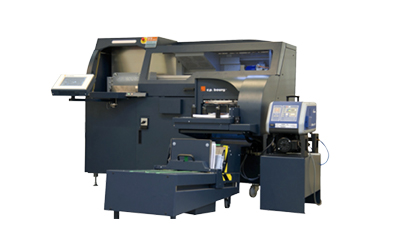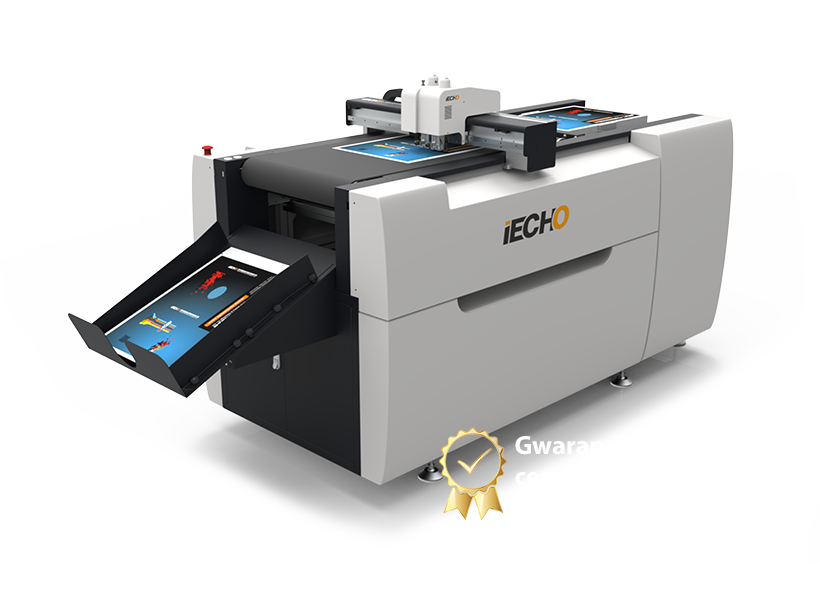C.P. Bourg's new strategy with new partner in Poland - Akonda
Akonda has been a brand for more than 8 years dedicated to providing modern bindery solutions to digital and offset printers. Operating from its offices in Piaseczno near Warsaw and Tychy, the company has delivered more than 1,000 binding and finishing devices in its history. The most popular equipment includes creasing machines, foiling machines (from desktop models to automated machines with feeding from a high stack), guillotines/cutters with electric or hydraulic knife drive, multifunctional cutter-binder-perforators for business cards, invitations, covers. New are gilding machines, which Akonda supplies in two technologies - direct thermal transfer printing or matrix-free gilding of digital prints.
In October 2016, Akonda signed a distribution agreement with Belgian manufacturer C.P. Bourg, based in Ottignies. This is related to a new brand philosophy that has emerged with the changing realities of the printing industry. The new strategy involves a virtually complete focus on the digital market, and thus both companies are opening up new opportunities to provide in-line / off-line / near-line (next to the line) solutions to Polish companies.
The philosophy of the c.p. Bourg brand is to produce machines that make bookbinding processes more efficient. This is in response to the changing realities of the printing industry. The development of web-to-print and print-on-demand technologies means that print runs are gradually decreasing, and the pressure on shorter and shorter lead times is increasing. It is a consolation that the number of orders on the market is increasing, so to some extent it balances with the decreasing print runs. However, the large number of orders causes a new type of problem with which companies will struggle - the problem of production organization.
That's why c.p. Bourg has set out to improve process efficiency by linking bindery equipment (booklet making or soft binding) directly to the printing machine. An indispensable piece of the puzzle is proper communication of the devices via the JDF protocol, thanks to which the settings of the printed job are transferred from machine to machine and minimal operator intervention is required. C.p. Bourg supports integrations with HP, Kodak, Oce, Xerox brands, and an integration module for Ricoh devices will soon be prepared.
In- off- near-line processes

Booklet making and wrapping processes can be carried out in-line (in-line), off-line (off-line) or near-line (near-line). When in-line processes are implemented, prints go directly to the finishing machine where they are processed.
Expansion of the system with a dynamic sheet feeder (BSF) allows to develop the line's capabilities for off- and near-line operation. The dynamic feeder allows completing sets from multiple sources - e.g. from the printing machine which prints on the fly and from cassettes in which prints from other printing machines are placed (e.g. combining prints from a color and black-and-white machine). BSF also allows the system to work completely disconnected from the printing machine (off-line) and to work with printouts coming from another machine than the one the feeder is connected to (near-line). Off- and near-line processes can be easily controlled through a barcode system. The loading of prints into the dynamic feeder is carried out using paper carts standardized with stackers of all printing machine manufacturers.
Sheet preparation module
The fundamental disadvantage of the in-line systems present on the market so far has been the issue of printing sheet optimization. It is easy to print A4 brochures from an SRA3 sheet while when printing A5 brochures there is the problem of optimizing the cost of the so-called "click". That's why Bourg at Drupa 2016 presented a solution that can slit an SRA3 sheet, rotate it by 90° (the process can be done multiple times by duplicating the item) and pass it to booklet making or wrapping. For book production, it is also possible to break the sheet in half.
Brochure

Booklet making is carried out using a folding and stitching unit, whose speed of 5000 booklets per hour does not slow down the printing machine. Hohner brand heads allow stapling up to 55 sheets (block-wise) or 30 sheets for later folding in half. It is possible to mount 2 or 4 heads, with the option of eyelet sewing.
The use of innovative silicone guide strips allows you to work safely without scratching even the most demanding work (such as with HP Indigo).
The booklet-making unit can be preceded by a module that allows creasing (on the fly, without stopping the paper and reducing the speed of the machine) of the stapled sheets. The booklet-making process is followed by shearing of the front edge of the booklet.
Wrapping of soft bindings

C.P. Bourg is the most preferred supplier in printing houses carrying out production, where each successive binding is different from the previous one (book on demand, photo-album production). The applied solutions allow checking the thickness of the insert and adjusting the cover to the insert accordingly, creasing of the cover is carried out within the machine using slats (creasing upwards and downwards in one pass). With the options for adjusting to variable work disabled, the machine achieves its maximum speed of 650 cycles per hour.
There are 2 models of edgebanding machines that differ in the glue gun - one model has an open glue gun installed for EVA glue, the other has an external Nordson glue gun. The external glue gun allows working with EVA and PUR glue, thanks to the hermetic closure of the PUR glue gun it can be stored for up to 7 days, which eliminates the loss of material (alternative PUR solutions force cleaning of the PUR system after finishing work - PUR glue cannot remain in the glue gun).
The wrapping machine can work in-line with the printing machine or as a stand-alone unit. For off-line operation, the operator can place the cartridge directly in the carriage and wait for the cycle to complete, or a cartridge feeder - Bourg Book Loader - can be installed. The cartridge feeder is a module in which the operator places cartridges for 8-25 minutes of continuous operation of the machine, the operator can walk away from the machine and the banding process is carried out automatically.
The last element in a soft binding production line can be a tripod, the latest device presented at Drupa 2016 allows binding that is also glued with PUR glue to be trimmed right after the cycle is completed.



